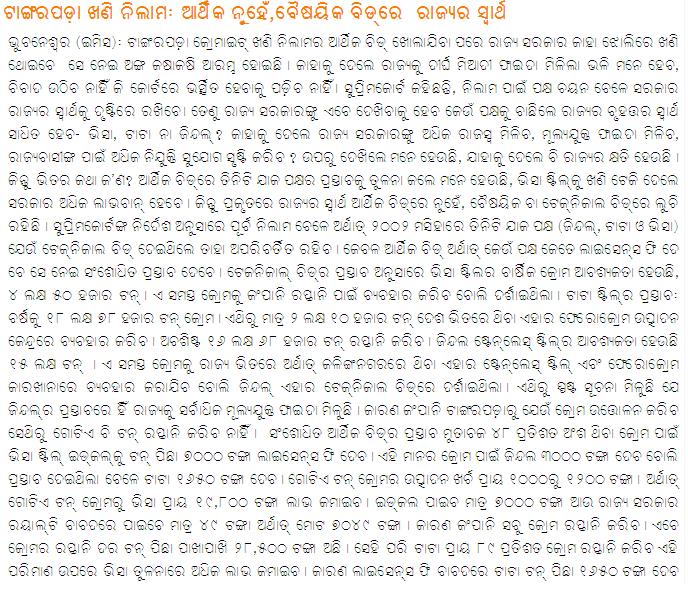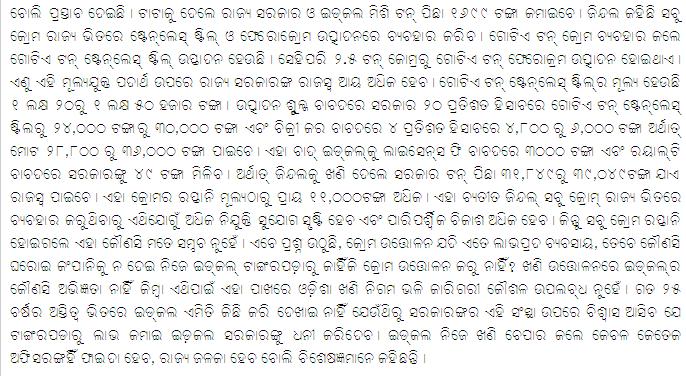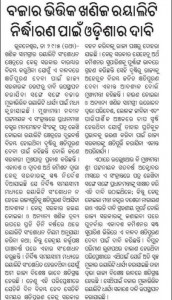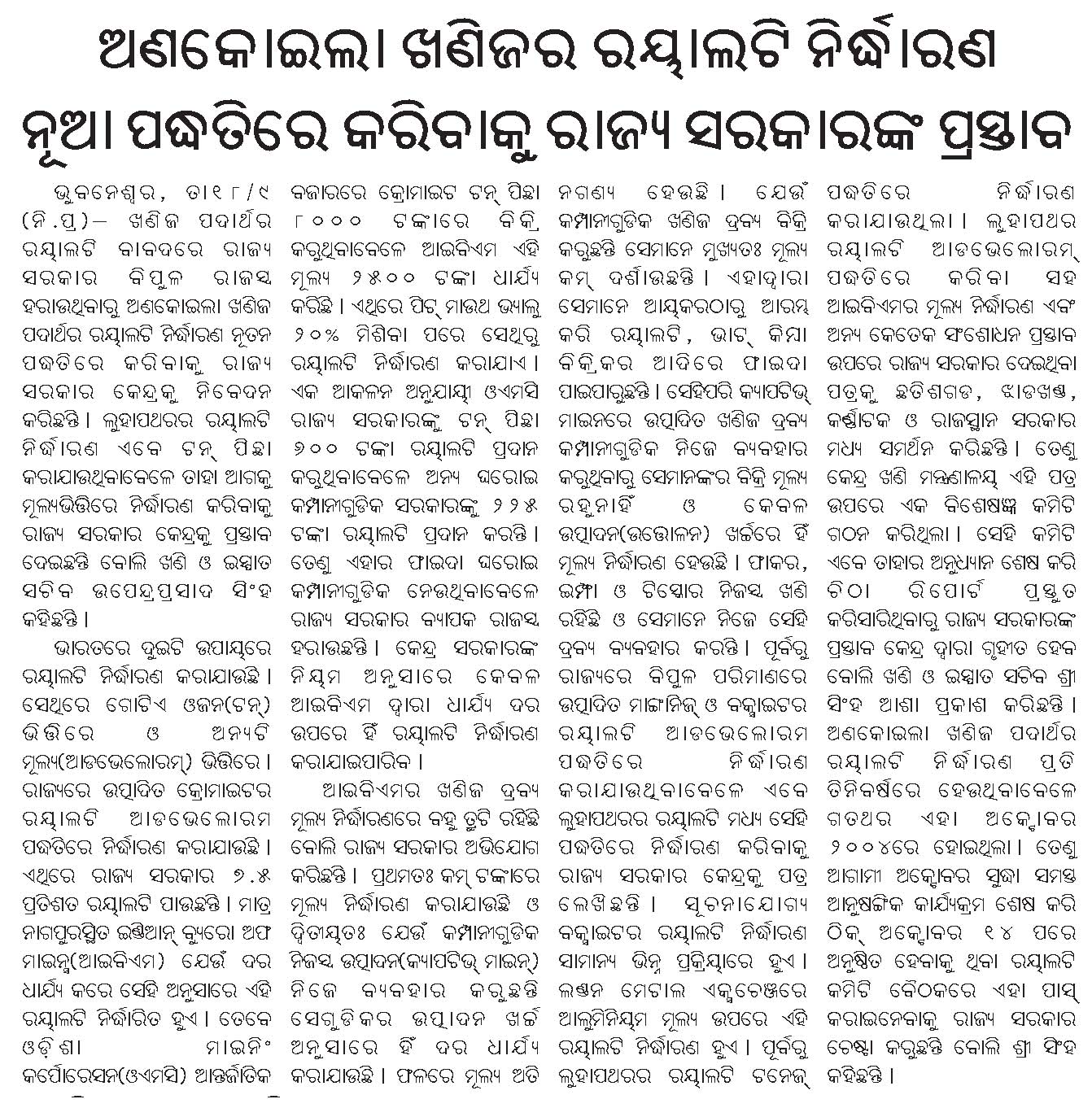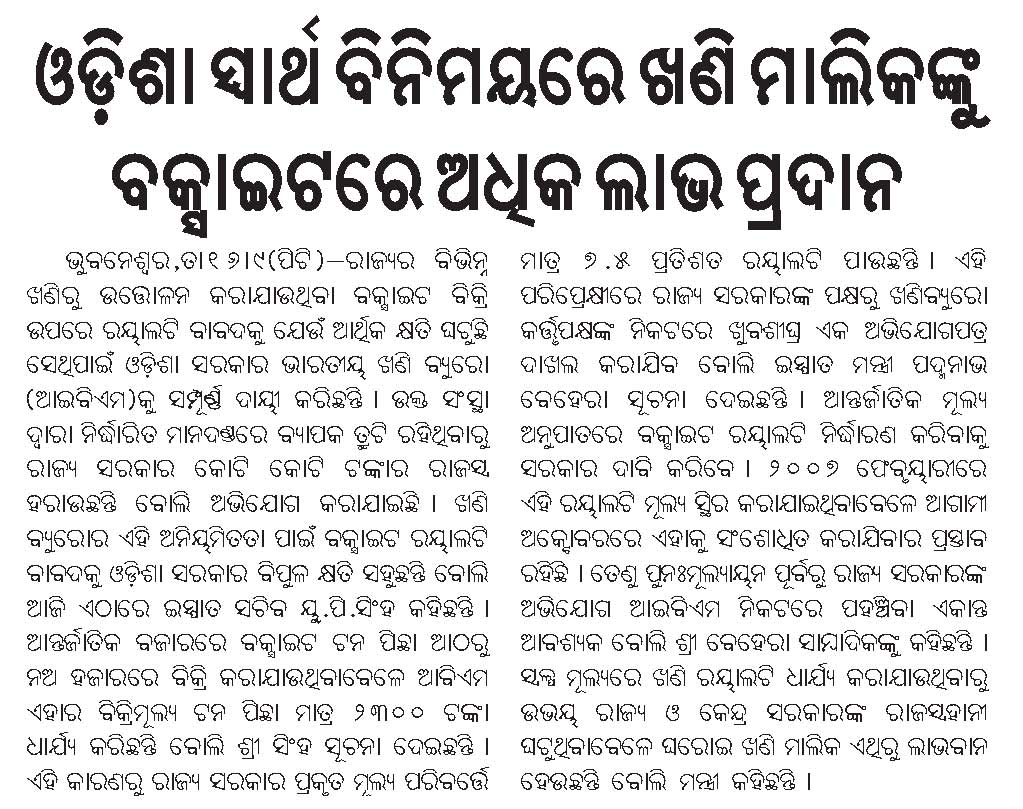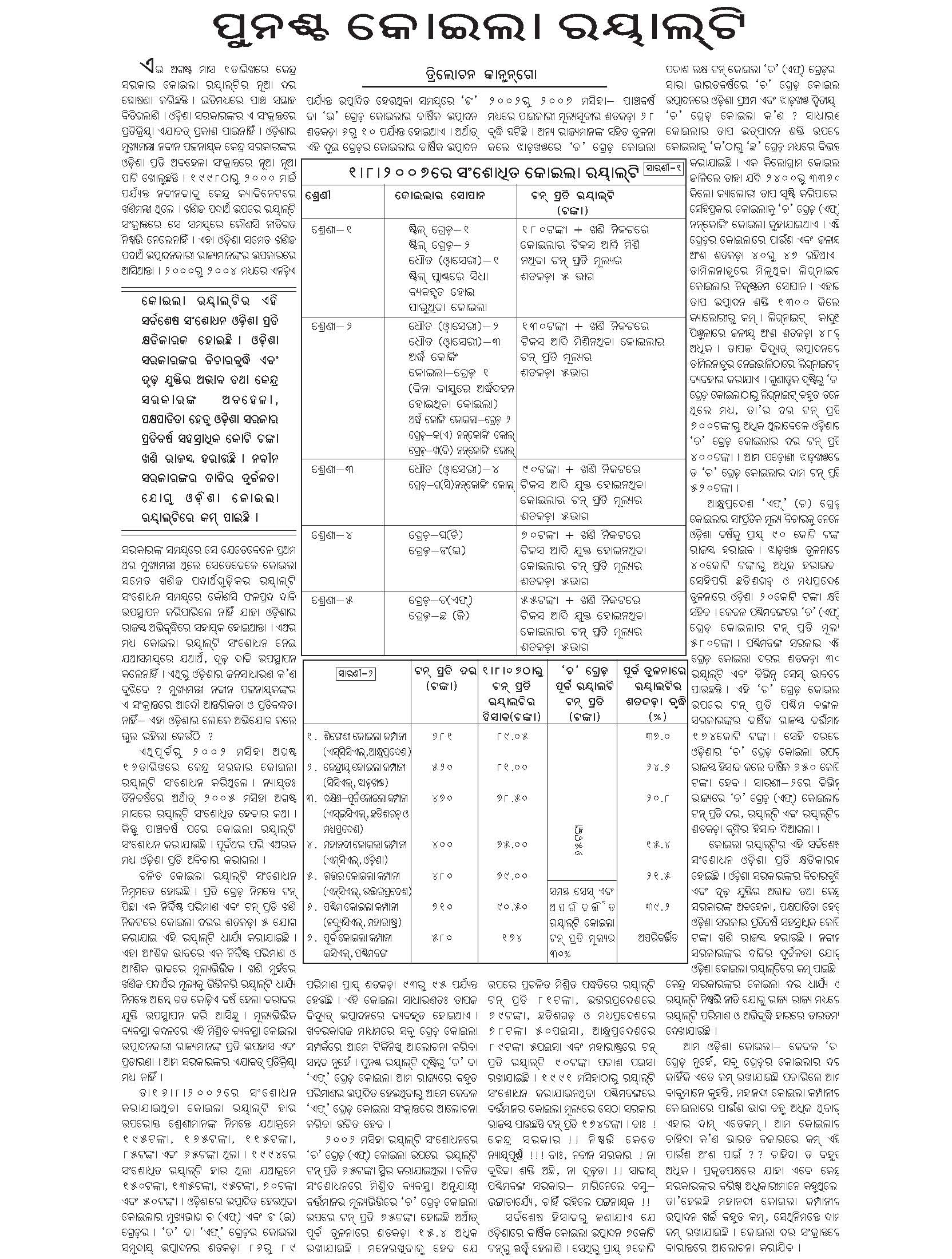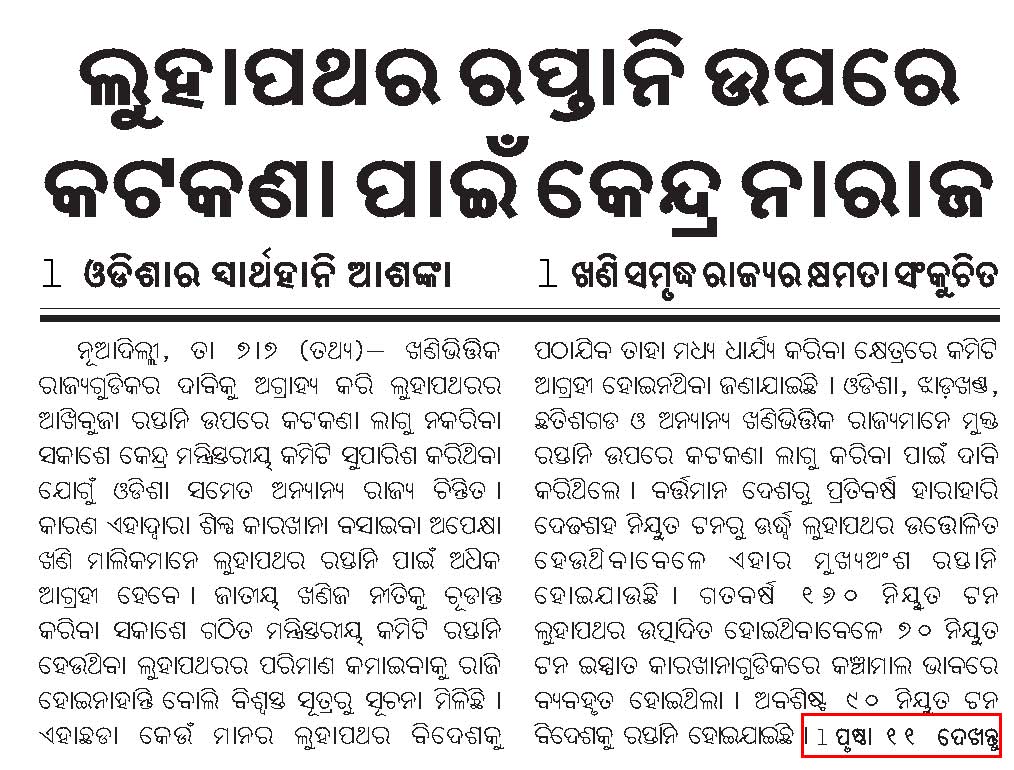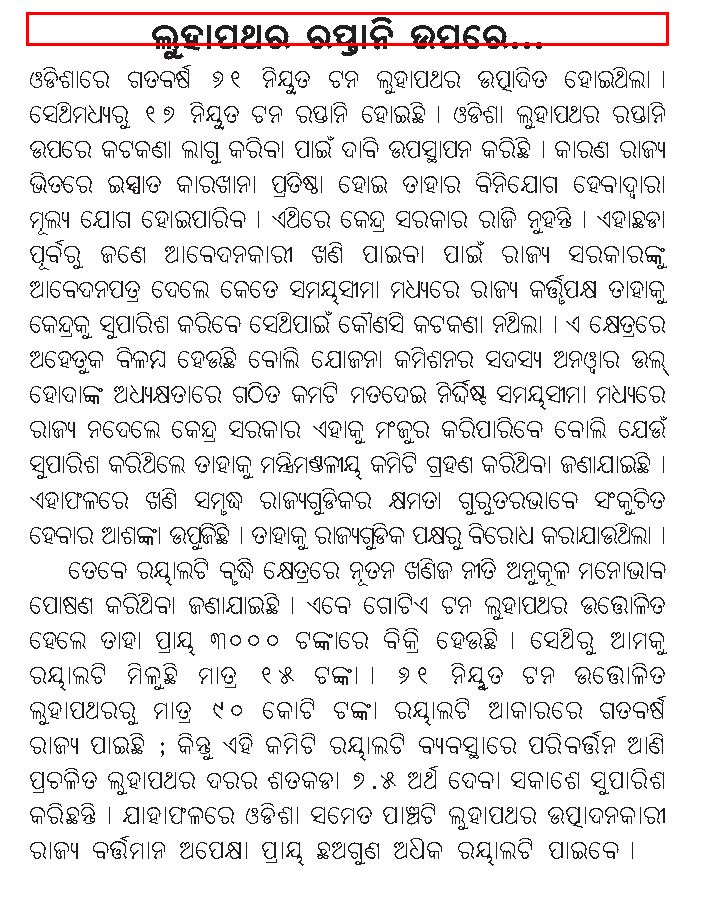Central government on the right track to give tribals their fair share
Central govt. schemes, Corporate Social Responsibility (CSR), INVESTMENTS and INVESTMENT PLANS, Mine royalty and cess, MINES and MINERALS, Mining royalty, Thermal, TRIBAL WELFARE Comments Off on Central government on the right track to give tribals their fair shareFollowing is an excerpt from a report in Telegraph.
… According to the draft bill, a mining company has to “allot free shares equal to twenty six per cent in the company… in case the holder of the lease (the land being taken over) is a company”. If the holder of the lease is a person, “an annuity equal to 26% of the profit after tax” has to be given as “annual compensation”.
The draft Mines and Minerals (Development & Regulation) Act, 2010, also proposes that the mining company has to provide employment and/or other assistance in accordance with the rehabilitation and resettlement policy of the state government concerned.
Government sources said they hoped the draft bill would address these issues through the “partnership” plan. “Their (tribals’) home is being taken away so how will they feel. The point is being driven home,” said an official with the mines ministry.
… The sources said the bill could come up before the cabinet for clearance in a few weeks.
The bill envisages the involvement of gram sabhas or district councils or panchayats — as the case may be — who would identify the families to be affected by mining projects, directly or indirectly, before the commencement of operations to “ensure appropriate benefits”.
“A mining welfare fund will be set up, funds from which will be only for tribal land,” sources in the government said. The plan is to create “model villages”, added an official.
The bill also proposes a mandatory Corporate Social Responsibility document to be attached to the mining plan. The document envisages a scheme for annual expenditure by the mining company on socio-economic activities in and around the mine area to facilitate self-employment opportunities.
P. Chidambaram’s home ministry, too, has come up with a plan to assuage tribal sentiments. It has proposed free power for villages within a certain radius of power plants. “People should not feel that the power generated from their land is benefiting only the rich in cities,” said a home ministry official.
… Home ministry officials said the focus was now on “micro-management” to understand the problems of tribals. On April 30, MPs from 34 districts most affected by Maoist violence will be briefed by home ministry officials. “We can put things right in the bureaucracy, but it is the duty of MPs to go and talk to affected people,” said a source.
On policing, the ministry wants to deploy police personnel “sympathetic” to tribals. …
